Pear variety Rainbow
Raduzhnaya is a summer pear variety bred on the basis of the State Scientific Institution YUNIIPOK (Chelyabinsk) together with the Sverdlovsk Horticultural Selection Station (Yekaterinburg) through crossing seedlings 41−15−9 s Forest Beauty... The seedling 41−15−9 itself was obtained by P.A. Zhavoronkov by hybridization of the selected form of the Blagoveshchenskaya Ussuri pear with Limonovka Issykkulskaya. The authorship belongs to a group of breeders headed by E.A. Falkenberg (in 1989 he carried out a pomological description of the variety).

The trees of this pear are medium-sized, the crown is moderately spreading, round in shape (in the conditions of Chelyabinsk) or wide-pyramidal (in the conditions of Yekaterinburg).
Self-fertility is low. The following varieties are recognized as the best pollinators for Raduzhnaya: Krasulia, Severyanka, Fabulous.
The fruits grow to large sizes (average weight is 130 - 140 grams), round, slightly cuboid in shape. The main color of the fruit is green, when ripe it is yellow-green; the cover color is an elegant red blush. The skin is tender. The pulp is juicy, with a good sour-sweet taste, dessert type (tasting score 4.2 - 4.5 points). By chemical composition, the fruits contain: dry matter (12.1%), the amount of sugars (8.4%), titratable acids (0.13%), ascorbic acid (6 mg / 100 g). The main purpose of the fruit is fresh consumption, processing into juices.
Fruit ripening is amicable, occurs in the same period as in Severyanka, or 2 - 3 days later. The main sign of ripening is yellowing of the skin. Moreover, the seeds of ripe fruits are white. Until fully ripe, the pears are firmly held on the branches and do not crumble. The total storage period of the fruits does not exceed 10 days, after which the process of softening and drilling of the pulp begins.
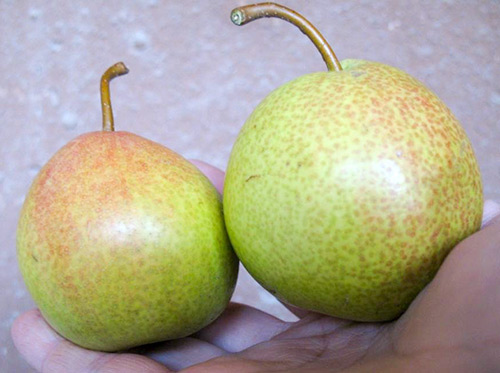
The early maturity of the Rainbow pear is good, the trees begin to bear fruit from the 4th year and quickly increase the yield (at the 6th year of life, the tree gives up to 16 kg of fruit). Fruiting is annual. The yield is high (higher than the control variety - Severyanka). The average yield for the first 5 years of fruiting was 21.7 kg / der. (or 9.0 t / ha), for 1989 - 30 kg / village, for 1990 - 36.6 kg / village.
This variety is highly winter-hardy (according to the CCCC, it is approximately at the level of Sverdlovsk varieties, according to YUNIIPOK, at the level of Severyanka). The frost resistance level is set to minus 37.2 ° C. In the harsh winter of 1978 - 1979, when the air temperature dropped to minus 48, 3 ° C, the mother tree froze up to 2 points, and young trees in the competitive study - up to 3 points. No lunges were observed. The level of drought resistance of the variety is average. Resistance to pear gall mite, scab and fire blight is high.
Rainbow grafts well and grows on the seedlings of the Ussuri pear. The best soil is leached chernozem, medium dense. The best terrain location is in the middle and upper third of the gentle slope. Formative pruning is recommended for trees up to 3 years old, and after that - sanitary.
The main advantages of this pear include: fruits with a good presentation and dessert taste, a high level of winter hardiness and resistance to a number of diseases and pests.
Speaking about the shortcomings of the variety, it is worth noting that in dry years there is a small amount of growth and "shrinking" of the fruits (ie, a decrease in their weight).
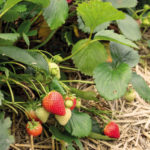
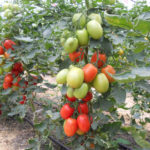
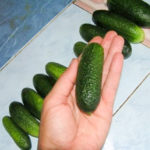
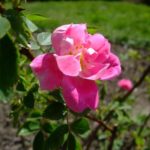

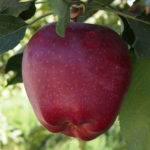



Rainbow in the Volga region is a variety with very good winter hardiness.But I have not yet observed such beautiful fruits as in the top photo, and the weight of the fruit is on average 80 - 100 g. The taste is quite good, but it does not come from year to year. I believe that the variety is suitable for places with a not very favorable microclimate and further north (Volga-Vyatka region).